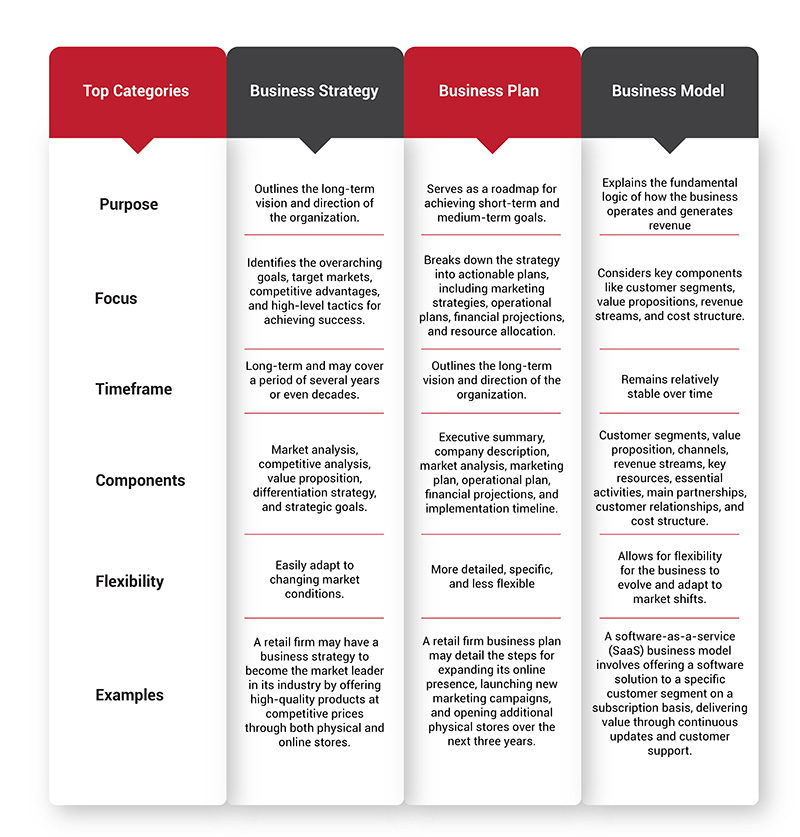Unlocking the Power of Business Strategy for Success
Business strategy is the battle plan for a better future.
– Patrick Dixon
Embarking on the journey of business growth without a well-defined strategy is akin to sailing a ship without a rudder. The success of any business hinges on the strategic path it follows. Business strategy is the compass that guides entrepreneurs of all scales towards their objectives. It sets the course for the organization, aligning goals and resources to drive sustainable growth and competitive advantage.
Understanding Business Strategy
Business strategy serves as a roadmap, outlining the direction an organization intends to take, the actions it will implement, and the resources it will allocate to achieve specific competitive advantages. It involves a series of decisions and actions that position a company within its industry or market.
The Vital Importance of Business Strategy
Business strategy plays a pivotal role in steering a company’s growth, competitiveness, and overall success. It provides a framework for decision-making, resource allocation, and adaptability to changing environments, ensuring that the organization remains agile, focused, and well-prepared to achieve its goals effectively. A well-crafted business strategy aims to:
- Achieve operational efficiency
- Identify and capitalize on opportunities
- Optimize resource utilization
- Secure a competitive position
- Address challenges and threats
- Guide efforts and behaviors
- Attain strategic control
Distinguishing Business Strategy, Business Plan, and Business Model
While often intertwined, business strategy, business plan, and business model serve distinct purposes in the realm of business. Understanding these differences is crucial for aspiring business leaders:

Strategic Levels in Business
Effective strategic management entails alignment across various levels of strategy to achieve long-term organizational goals and competitive edge. Business strategy can be categorized into different levels based on scope and organizational hierarchy:

The three primary levels of business strategy include:
- Corporate level strategy: Formulated by top management, this long-range plan guides decisions on business lines, expansion, mergers, and diversification.
- Business level strategy: Developed by general managers, this blueprint translates mission and vision into actionable strategies for specific business units.
- Functional level strategy: Executed by operational managers, this level focuses on decisions within functional areas like marketing, production, and finance.
Implementing a Successful Business Strategy
Building and executing a robust business strategy requires a systematic approach and careful planning. Here are key steps to craft and implement a winning strategy:
- Define clear targets: Identify specific target markets to align sales and marketing efforts effectively.
- Outline strategic tactics: Select appropriate tactics based on goals, target audience, and industry dynamics to achieve desired outcomes.
- Think long-term: Plan for the future by treating strategy as an ongoing cycle rather than a one-time event.
- Create a timeline: Establish a timeline for goal achievement, allowing flexibility for unexpected delays.
- Focus on growth: Identify growth opportunities and allocate resources accordingly for sustainable expansion.
- Develop a budget plan: Allocate resources wisely to maximize the impact of the business strategy.
- Make fact-based decisions: Base strategic decisions on data and align them with the organization’s values and mission.
- Invest in pre-work: Conduct thorough research and stay updated on industry trends to refine the strategy over time.
- Execute well and measure results: Monitor the effectiveness of the strategy, make adjustments as needed, and track performance metrics.
Business Strategy Success Stories
Hubspot revolutionized the market with its inbound marketing strategy, educating audiences on the benefits of inbound marketing and offering free courses to drive engagement.
Apple Inc. differentiated itself by simplifying its iOS operating system, catering to a loyal customer base and setting itself apart from competitors.
In Conclusion
Establishing a well-defined business strategy is essential for organizing goals, optimizing resources, and navigating the competitive landscape. As businesses face increasing competition, the demand for effective business strategies continues to rise, with organizations leveraging various strategic approaches to achieve success.


